Order Artiodactyla Family Ziphiidae Scientific name Mesoplodon hectori Rank Species | Phylum Chordata Genus Mesoplodon Higher classification Mesoplodont whale | |
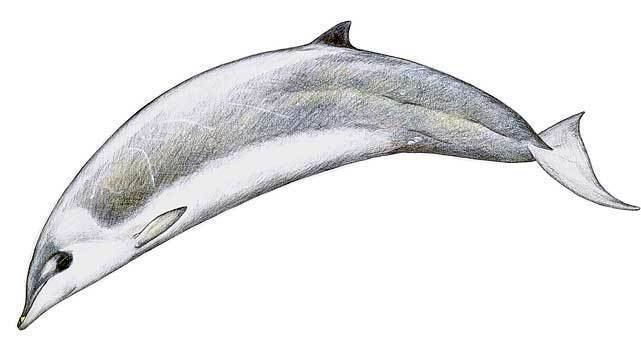 | ||
Similar Andrews' beaked whale, Strap‑toothed whale, Gray's beaked whale, Perrin's beaked whale, Hubbs' beaked whale | ||
Hector's beaked whale (Mesoplodon hectori), is a small mesoplodont living in the Southern Hemisphere. This whale is named after Sir James Hector, a founder of the colonial museum in Wellington, New Zealand. Some specimens washed up in California and once thought to belong to this species have subsequently been shown through analysis of mtDNA and detailed morhological examination to be a new species, Perrin's beaked whale, The species has rarely been seen in the wild.
Contents

Some data supposedly referring to this species, especially juveniles and males, turned out to be based on the misidentified specimens of Perrin's beaked whale - especially since the adult male of Hector's beaked whale was only more recently described.
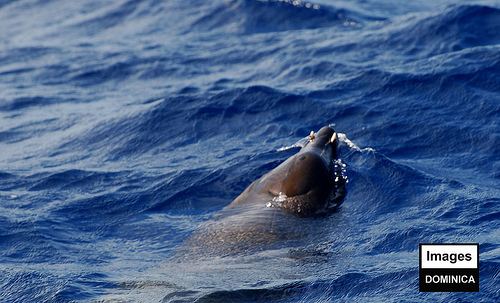
Taxonomy
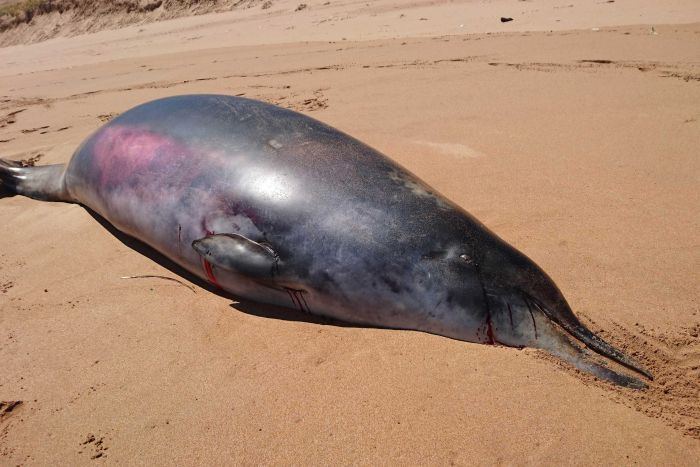
The English taxonomist John Edward Gray first named the species Berardius hectori in 1871, based on a specimen (a 2.82 m [9’3” ft] male) collected in Titahi Bay, New Zealand in January, 1866. The following year, 1872, English anatomist William Henry Flower placed it in the genus Mesoplodon, while in 1873, Scottish scientist James Hector assigned the same specimen to the species M. knoxi. The species remained in the genus Mesoplodon until 1962, when Charles McCann, a vertebrate zoologist at the Dominion Museum in Wellington, argued that the species only represented a juvenile of Berardius arnuxi. Beaked whale specialist Joseph Curtis Moore (1968) and J. G. B. Ross (1970) contested this designation, arguing that M. hectori was a valid species. Adult male specimens from the 1970s and 1980s confirmed the species' specific status.
Physical description
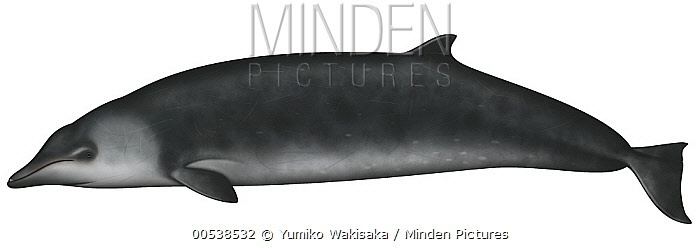
Reaching a maximum length around 4.2 m (1.9 m when born), and with an estimated weight around 1 tonne (1.032 tons), Hector's is one of the smallest of the beaked whales. It is known from only a few stranded animals and a single confirmed sighting of a juvenile off Western Australia. Hector's beaked whales are dark greyish-brown dorsally, paler ventrally. A single adult male specimen had a white beak and white on the anterior portion of the head, with white, linear scars criss-crossing its body, while the juvenile seen off Western Australia had a mask covering its eyes and extending unto its melon and upper beak. The melon, which is not very prominent, slopes quite steeply to the short beak. The dorsal fin is triangular to slightly hooked, small, and rounded at the tip. The leading edge of the dorsal fin joins the body at a sharp angle.
Dentition
Adult males have a pair of flattened, triangular teeth near the tip of the lower jaw. As with most other beaked whales, the teeth do not erupt in females.

In March 2016, the South Australian Museum conducted a necropsy on a beached female specimen of the species from Waitpinga beach, near Adelaide, South Australia. The specimen was found to have a pair of large fangs not seen among the species typical dentition, especially for females, who typically have none. The fangs are possibly vestigial, or atavisms of some other kind, though a definitive answer is difficult because of the dearth of knowledge about the species.
Distribution and ecology
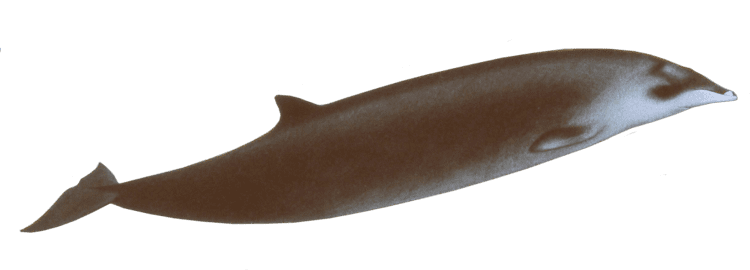
Hector's beaked whale has a circumpolar distribution in cool temperate Southern Hemisphere waters between about 35 and 55°S. Most records are from New Zealand, but also reports from Falkland Sound, Falkland Islands, Lottering River, South Africa, Adventure Bay, Tasmania, and Tierra del Fuego, in southern South America have been made. Supposed Northeast Pacific records in the older literature actually refer to Perrin's beaked whale.
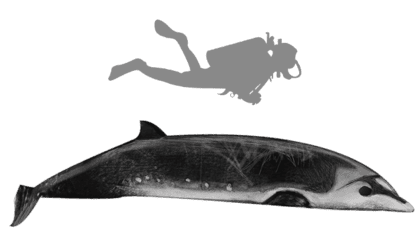
Sightings are rare due to their deep-ocean distribution, elusive behaviour and possible low numbers. Although sightings are rare, 2 Hector's beaked whales were spotted off the north coast of Egypt and they were swimming very close to the beach which made people panic as no whales nor sharks were spotted at this area ever in Egypt. Nothing is known about the diet of this species, although it is assumed to feed on deepwater squid and fish. Because they lack functional teeth, they presumably capture most of their prey by suction.
Body scarring suggests there may be extensive fighting between males, which is common in beaked whales. Nothing is known about breeding in this species.
This species has never been hunted at all, and has not entangled itself in fishing gear. Most records of the whale have been stranded specimens on beaches, particularly in New Zealand.
Conservation
Hector's beaked whale is covered by the Memorandum of Understanding for the Conservation of Cetaceans and Their Habitats in the Pacific Islands Region (Pacific Cetaceans MOU).
Specimens
- MNZ MM001834 - 16 July 1980; Kaikoura, New Zealand
